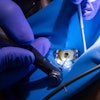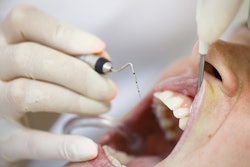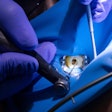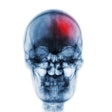Periodontal disease may be a comorbidity in patients with ST-segment elevation myocardial infarction (STEMI) heart attacks, according to a large U.S. study published on May 8 in the Journal of the American Dental Association.
Patients in the U.S. hospitalized with STEMI, a heart attack type in which a major coronary artery becomes completely blocked, and who had a periodontal disease code in their patient histories were associated with worse in-hospital outcomes, including mechanical circulatory support use, mechanical ventilation, and acute kidney injury, the authors wrote.
“Recognizing PD (periodontal disease) as a comorbidity in STEMI may help tailor care strategies, reduce adverse outcomes, and improve resource allocation in clinical practice,” wrote the authors, led by Dr. Nadhem Abdallah of the department of internal medicine at Hennepin Healthcare in Minneapolis.
Though greater cardiovascular morbidity has been associated with gum disease, its effects on STEMI outcomes haven't been studied often.
To explore potential associations, STEMI hospitalizations from the 2016-2019 U.S. National Inpatient Sample dataset, comparing outcomes in patients with and without gum disease, were analyzed. Outcomes included mortality, mechanical circulatory support, mechanical ventilation, vasopressor use, cardiogenic shock, acute kidney injury, as well as hospital length of stay and total hospital cost, according to the study.
Of the nearly 3 million STEMI hospitalizations, 0.2% of patients had an International Classification of Diseases, 10th Revision, Clinical Modification (ICD-10-CM) code for periodontal disease.
A gum disease code was linked to greater odds of mechanical circulatory support use (adjusted odds ratio [aOR], 1.57; 95% confidence interval [CI], 1.25 to 1.97), mechanical ventilation (aOR, 1.26; 95% CI, 1.01 to 1.58), cardiogenic shock (aOR, 1.48; 95% CI, 1.20 to 1.83), and acute kidney injury (aOR, 1.32; 95% CI, 1.13 to 1.55).
Additionally, the code correlated with longer stays in the hospital (7.18 vs. 4.40 days, p < 0.001) and greater hospital costs ($141,245 vs. $98,152, p < 0.001). However, mortality and vasopressor use were not changed in those with the gum disease code, the authors wrote.
Moreover, the study had limitations, including the nature of periodontal disease documentation in hospital records. Instead of distinguishing patients with and without gum disease, the researchers compared them with and without documented ICD-10-CM codes. Therefore, it may not be a true reflection of disease prevalence, they wrote.
More studies need to be conducted to refine risk-stratification strategies and to measure whether improving periodontal care and early intervention approaches could attenuate negative cardiovascular outcomes, the authors wrote.
“The presence of a PD ICD-10-CM code was associated with higher odds of cardiogenic shock, AKI (acute kidney injury), and increased requirements for critical care measures, including mechanical ventilation and MCS (mechanical circulatory support) use in patients hospitalized with STEMI,” Abdallah and colleagues wrote.




















